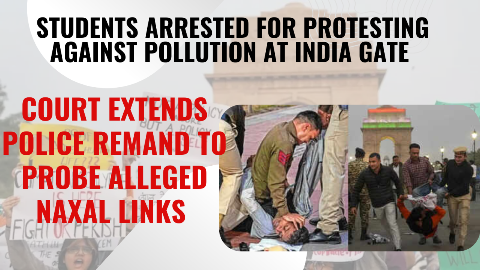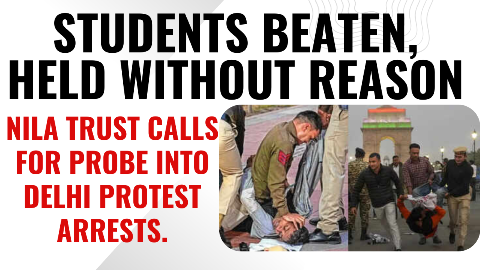Mahabodhi Vihara Liberation Movement: For Thousands of Years, the Awakened One Has Been Fighting for His Own Freedom
Townhall Times The Mahabodhi Vihara Liberation Movement is a historic struggle that has been ongoing for more than a century. Recently, under the direction of the Bihar and central governments, Bihar Governor Arif Mohammad Khan visited the Mahabodhi Vihara, where he forcefully performed a Hindu ritual on a broken Buddha statue, declaring it to be a Shivling. This act was not only an insult to Buddhist faith but also pointed toward a deeper conspiracy—one where Brahminical organizations like the RSS, with the backing of the central government, are working to Brahminize Buddhist heritage sites.
The Buddhist community has long accused Brahmins of having historically destroyed the 84,000 viharas and stupas built by the Buddha, converting them into Hindu temples. They presented Buddha’s images as forms of Hindu deities in a systematic attempt to erase Buddhist identity. Scientific evidence supports this claim: no statue of a Brahminical deity has ever been found from the pre-Christian era, while numerous pre-Christian-era Buddha statues have been discovered and verified. This indicates how Brahminism has co-opted Buddha’s images and teachings to construct its own mythologies.
Historically, there has been a deep ideological conflict between the teachings of Buddha and Brahminism. While Brahminism promotes inequality based on birth and ritualism, Buddha envisioned a society based on equality, compassion, and reason. This contrast is precisely why Brahminical forces have repeatedly attempted to erase Buddhism. Yet, in 1837, British historians Cunningham and Colonel Maisey excavated Sarnath—where Buddha gave his first sermon and founded the Sangha. In 1842, they excavated Sankisa—where Buddha is said to have descended to earth from heaven on a staircase of jewels after preaching to the gods.
These discoveries drew global attention back to India and to Buddha, who came to be known as the “Light of Asia.” But the struggle did not end there. Even today, Buddha’s ideology must confront the dominance and mindset of Brahminical power—because Buddha believed that humanity’s problems can only be solved through reason and science, not superstition and ritual.
On February 12, 2025, a new and more intense phase of the Mahabodhi Vihara liberation movement was launched, with hundreds of monks and followers participating. The movement demands full administrative control of the Mahabodhi Temple be handed over to the Buddhist community and the repeal of the 1949 Bodh Gaya Temple Act. This is not just a fight over one temple—it is a central battle for the dignity of Buddhism, the consciousness of the oppressed (Bahujan), and the movement for social justice.
This struggle is not confined to India. Buddhism is an international tradition, and it needs the support of Buddhist organizations in countries like Thailand, Japan, Tibet, Korea, and Sri Lanka. This is a fight against a mindset that has historically perpetuated inequality, casteism, and exploitation. Even today, hundreds of Buddhist sites in India remain under Brahminical control. The liberation of Mahabodhi could be a decisive turning point in reversing this injustice.
The struggle for Mahabodhi is not just religious—it is a demand to restore cultural and historical rights. The foundation for this movement was laid in 1891 by Anagarika Dharmapala. This is the very place where Buddha attained enlightenment under the Bodhi Tree and became the Samma Sambuddha. It symbolizes equality, compassion, and peaceful coexistence for all of humanity.
History bears witness that during the reign of Mughal Emperor Shah Alam II, administrative control of this site passed into the hands of a Hindu mahant (priest), and nearby villages were granted to him as donations. As a result, the site became restricted and contested for Buddhists. To change this, Dharmapala established the Mahabodhi Society of India and launched a global movement with support from notable figures like Swami Vivekananda, Surendranath Tagore, and Sylvain Lévi.
Although the British government provided partial support and some control was regained in 1894, the mahant challenged this in court. The Gaya and Calcutta High Courts upheld the mahant’s administrative rights while granting Buddhists only the right to worship. This ruling clearly violated the religious rights of Buddhists.
In the 1920s, Buddhist monks began raising this issue through the Indian National Congress. Burmese monk U Ottama even met Gandhi at a Congress session. Although Gandhi formed a committee in 1925, no substantial action was taken due to Congress’s inaction and the dominance of Hindu majority interests. This led eminent scholars like Mahapandit Rahul Sankrityayan to resign from the Congress.
In 1948, the Bihar government passed the Bodh Gaya Temple Management Act, which was notified in 1949. Under this Act, management of the temple was handed to a joint committee, where Buddhists remain in the minority. This arrangement still exists—despite the fact that Mahabodhi is an exclusively Buddhist pilgrimage site.
This is not only a historical injustice but also a violation of the Indian Constitution’s Articles 25 to 28, which guarantee freedom of religion. The Constitution states that every religion has the right to manage its own places of worship independently, and the 1949 Act directly contradicts this provision.
The historical and cultural significance of Mahabodhi is such that Emperor Ashoka chose this place to spread Buddhism. When Dr. Babasaheb Ambedkar visited here, his eyes welled with tears of reverence. In the sculptures at Sanchi and Bharhut, Ashoka is depicted fainting at the sight of the Vajrasana—symbolizing the site’s sacred power.
Even today, many ancient Buddhist remains lie buried beneath the homes of Bodh Gaya. This land, once the witness to the awakening of the Enlightened One, still calls out for compassion, equality, and awareness. The Vajrasana may be silent, but that silence is transforming into the voice of revolution.
The liberation of Mahabodhi Vihara is not just the responsibility of Buddhists—it is a moral responsibility of the entire world.












Leave a Reply